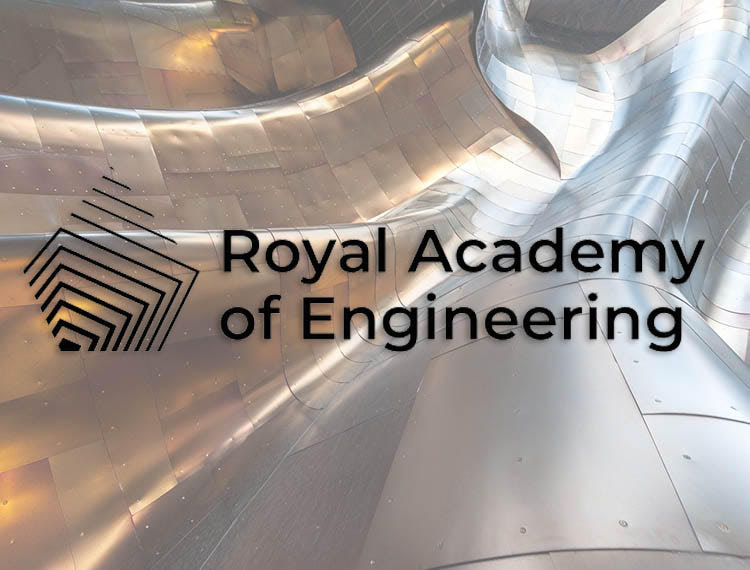Major Project Award for team behind machine vital to developing commercial power from nuclear fusion

The engineers behind the Mega Amp Spherical Tokamak Upgrade (MAST-U), the UK’s national fusion experiment based in UKAEA’s Culham Science Centre in Oxfordshire, have received the Royal Academy of Engineering’s Major Project Award for 2021. MAST-U is a pivotal step towards achieving commercially viable fusion power plants and a future source of clean, safe and plentiful energy. The team were presented with their award at a special celebration in London on 13 July attended by the Academy’s Royal Fellow, HRH The Princess Royal.

 Exterior view of the MAST Upgrade machine Copyright EUROfusion
Exterior view of the MAST Upgrade machine Copyright EUROfusion
MAST Upgrade’s compact fusion design, the ‘spherical tokamak’, has the potential to provide a cheaper, more efficient means of providing fusion energy than is possible in larger devices. However, a big engineering challenge in getting the more compact machines on the electricity grid is how to sustain a fuel ten times hotter than the Sun in a smaller volume without damaging the machine itself. The team at Culham led the design and production of a complex and technically challenging exhaust system, called the Super-X divertor, on MAST Upgrade. This reduces the heat of the exhaust material by a factor of ten and channels it out of the machine at temperatures low enough for the machine’s components to withstand, improving the operational life and economic viability of a future fusion power plant.
The MAST-U leadership team reflect the breadth of engineering capability working on this complex project, from high-voltage power and complex and precise mechanical assembly to control and instrumentation, underpinned by transformative, ambitious science.
The recipients of the Major Project Award are: Dr Andrew Kirk, Director of Tokamak Science; Dr Joe Milnes, MAST-U Construction Project Leader; Nanna Heiberg, MAST-U Operations Department Manager; Dr Richard Martin, MAST-U Operations Manager; Dr Paul Stevenson, Electrical Engineering Department Manager.
The team embarked on a design and build programme of MAST-U in 2010, with funding from the Engineering and Physical Sciences Research Council, part of UK Research and Innovation. By November 2020 they had completed the new £55M device and performed fusion tests for the first time. The device comprises 130,000 components, with 90% of contracts placed in the UK supply chain. 20 magnets have been built, the largest over 4m in diameter, each containing 5000 components installed to sub-mm accuracy. The vessel interior is lined with 1000 graphite tiles to manage the extreme heat fluxes, cryo-pumped to ultra-low vacuum pressures of 1 x 10-8 mbar. Finally, 120km of cabling, 2km of gas supply lines and over 1000 different detectors enable sophisticated control of the fuel, which is thinner than air.
Professor Bashir M. Al-Hashimi CBE FREng, Chair of the Royal Academy of Engineering Awards Committee, said: “The UK is pioneering smaller, cheaper fusion devices and the Awards Committee was very proud to reward the engineers behind the success of MAST Upgrade. The project delivers an important boost to plans for a prototype fusion power plant in the UK and this will ultimately enable the affordable and efficient delivery of a new and sustainable source of electricity.”
Nanna Heiberg, MAST-U Construction Project Leader, said: “I am thrilled to have been part of the team building and commissioning this complex, precision machine. This award is a wonderful accolade to the role MAST Upgrade will be playing in making fusion energy a reality, which will have an immense impact on the world.”
Notes for Editors
- The Royal Academy of Engineering Awards Celebration was held on 13 July 2021 in Prince Philip House in central London. All necessary measures were taken to deliver an event that was COVID-19 safe and secure for guests and staff.
- Fusion has huge potential as a long-term energy source that is low carbon and inherently safe, with abundant and widespread fuel resources (the raw materials are found in seawater and the Earth’s crust). Fusion researchers are developing the tokamak – a chamber that uses a powerful magnetic field to confine hydrogen isotopes as they are heated into a plasma in which the isotope nuclei collide and fuse together. This releases energy that can generate electricity – the same way as the Sun creates heat and light.
- The Major Project Award recognises the contribution of a team of up to five engineers, based in the UK, who have delivered a major engineering project that has had a substantial impact on society. Previous winners include the engineers behind The Ordsall Chord, the Queensferry Crossing, the Shah Deniz 2 project, and the technology to communicate with the Rosetta spacecraft as it delivered the Philae probe onto the surface of a comet. Winners of the Major Project Award receive a silver gilt medal.
- The UK Atomic Energy Authority (UKAEA) carries out fusion energy research on behalf of the UK Government at Culham Science Centre near Oxford. UKAEA oversees Britain’s fusion programme, headed by the MAST Upgrade (Mega Amp Spherical Tokamak) experiment. It also hosts the world’s largest fusion research facility, JET (Joint European Torus), which it operates for European scientists under a contract with the European Commission. More information: www.gov.uk/ukaea. Twitter: @UKAEAofficial
- The Royal Academy of Engineering is harnessing the power of engineering to build a sustainable society and an inclusive economy that works for everyone. In collaboration with our Fellows and partners, we’re growing talent and developing skills for the future, driving innovation and building global partnerships, and influencing policy and engaging the public. Together we’re working to tackle the greatest challenges of our age.
Media enquiries to: Pippa Cox at the Royal Academy of Engineering Tel. +44 207 766 0745; email: [email protected]











Responses